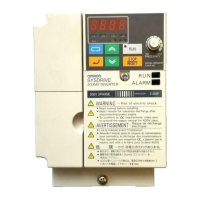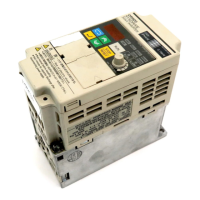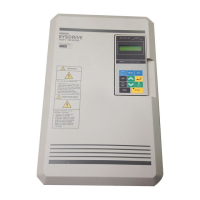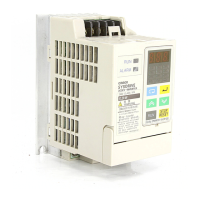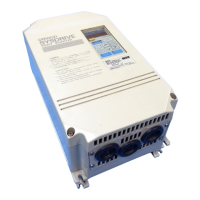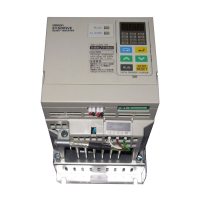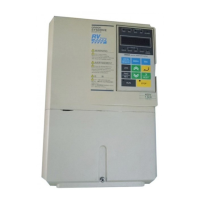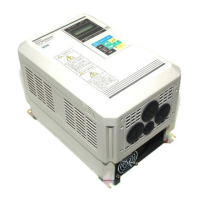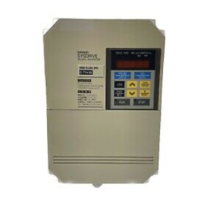11-3
D Vibration
The 3G3MV Series employs highcarrierPWMcontrol to reduce motorvibration. When
themotorisoperatedwiththeInverter,motorvibrationisalmostthesameaswhenoper-
ated with a commercial power supply.
Motor vibration may, however, become greater in the following cases.
·Resonance with the natural frequency of the mechanical system
Takespecial care when a machinethat has been operated ata constant speed is to
be operated in variable speed mode.
If resonance occurs, install vibration-proof rubber on the motor base.
·Imbalance rotor
Take special care when the motor is operated at a high speed (50 Hz or more).
D Noise
Noise is almostthe same as whenthe motor isoperated with acommercial powersup-
ply. Motor noise, however, becomes louder when the motor is operated at a speed
higher than the rated speed (50 Hz).
H Using Inverter for Special Motors
D Pole-changing Motor
The rated input current of pole-changing motors differs from that of standard motors.
Select,therefore,anappropriateInverteraccordingtothemaximuminputcurrentofthe
motor to be used.
Before changing the number of poles, always make sure that the motor has stopped.
Otherwise,theovervoltageprotectiveorovercurrentprotectivemechanismwillbeactu-
ated, resulting in an error.
D Submersible Motor
The rated input current of submersible motors is higher than that of standard motors.
Therefore, always select an Inverter by checking its rated output current.
When the distance between themotor and Inverter is long,use a cablethick enough to
connect the motor and Inverter to prevent motor torque reduction.
D Explosion-proof Motor
Whenanexplosion-proofmotoror increased safety-type motor istobe used,itmustbe
subjecttoanexplosion-prooftestinconjunctionwiththeInverter.Thisisalsoapplicable
when an existing explosion-proof motor is to be operated with the Inverter.
Using the Inverter for a Motor Chapter 11
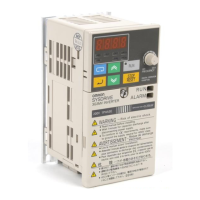
